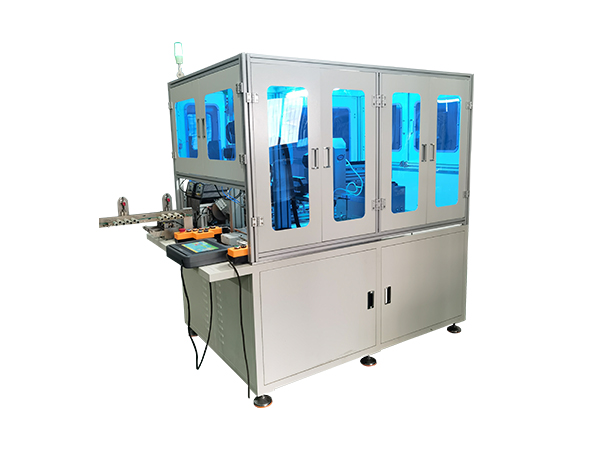Automatic wire welding equipment achieves efficient, precise and stable welding operations through automation technology. Its application scenarios mainly revolve around core demands such as production scale, process complexity, quality requirements, cost pressure and safety risks. The following are the specific usage scenarios and decision-making bases:
I. Large-scale continuous production scenarios
The automotive manufacturing industry
Application scenarios: body welding, battery pack module welding, exhaust system connection, etc.
Decision-making basis
Production demand: The annual production of automobiles usually ranges from tens of thousands to millions of units, and 24-hour continuous production is required to spread out equipment costs. For instance, Tesla's Shanghai factory achieves the production of one vehicle body every 45 seconds through automatic wire welding.
Process standardization: The welding of vehicle bodies must meet unified quality standards (such as weld strength and sealing performance), and automated equipment can eliminate fluctuations in manual operation.
Multi-model co-production line: Through modular design (such as replaceable fixtures and quick model change programs), a single welding line can be compatible with the production of multiple models including sedans and SUVs.
Manufacturing of 3C electronic products
Application scenarios: Welding of mobile phone camera modules, FPC (Flexible Circuit Board) connection of tablet computers, assembly of battery packs for notebook computers, etc.

Decision-making basis
High-speed production: Electronic products have a short life cycle and need to respond quickly to market demands. For instance, a certain mobile phone manufacturer has reduced the welding cycle of camera modules from 8 seconds per piece to 2 seconds per piece through an automatic welding line.
Miniaturization requirements: The size of components such as camera modules and fingerprint recognition modules is less than 5mm, and high-precision equipment (such as laser welding, ultrasonic welding) is needed to achieve 0.1mm-level welding.
Ii. Scenarios with high precision and high reliability requirements
Aerospace field
Application scenarios: Welding of aircraft engine blades, sealing of spacecraft fuel tanks, connection of titanium alloy structural components, etc.
Decision-making basis
Material particularity: Materials such as titanium alloys and superalloys require low heat input welding techniques (such as electron beam welding and friction stir welding) to avoid cracking and deformation.
Non-destructive testing: After welding, internal defects need to be detected by X-ray or ultrasonic waves. Automated equipment can be integrated with online detection modules to provide real-time data feedback.
Traceability requirements: Each weld seam must record information such as the operator, time, and parameters, meeting aviation certification standards (such as AS9100D).
Medical device industry
Application scenarios: surgical knife welding, artificial joint connection, heart stent formation, etc.
Decision-making basis
Biocompatibility: During the welding process, spatter, oxidation and other contaminants should be avoided. Pulsed laser welding or micro-beam plasma welding technology should be adopted.
Surface finish: The surface roughness of the implant should be ≤Ra0.8μm. Automated equipment can precisely control the welding energy and the flow rate of the protective gas.
Sterilization compatibility: The equipment must comply with GMP (Good Manufacturing Practice for Pharmaceuticals) standards and support direct ethylene oxide or radiation sterilization after welding.
about
Introduction video case honor partners factoryproduct
Automatic welding line Non-standard customization Automatic soldering Glue/screw lockingnews
dynamic Information faqCustomer Service
contactMr. Xia:+86 186-7696-3763

WeChat QR code

Douyin QR Code
Copyright © 2025 Copyright © Dongguan Chuangxiao Automation Technology Co., Ltd.
本站相关网页素材及相关资源均来源互联网,如有侵权请速告知,我们将会在24小时内删除